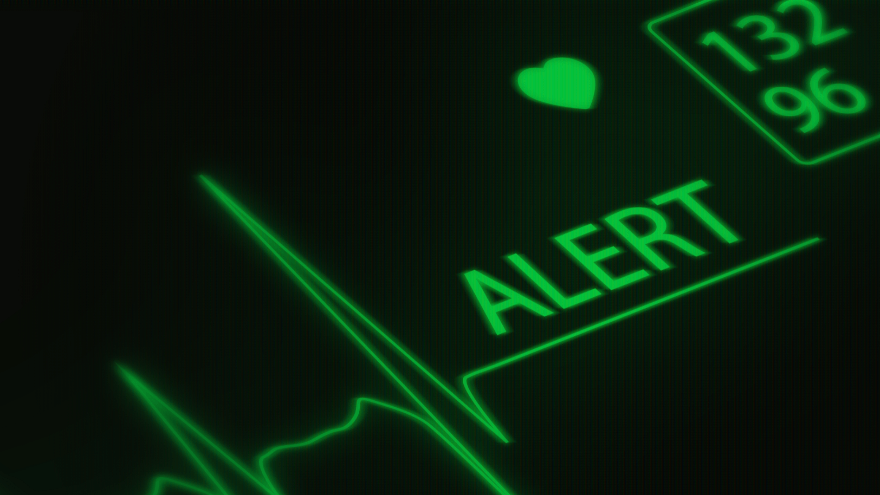In the realm of healthcare, patient engagement technology has emerged as a powerful tool in customizing care for individuals suffering from heart failure. As we delve into the role of Remote Patient Monitoring (RPM) in precision medicine, it becomes evident that these technological advancements offer unparalleled opportunities to tailor treatment plans according to the unique physiological data of each patient.
What Lies Beyond Patient Engagement Technology’s Horizon?
Patient engagement technology encompasses a diverse array of tools and platforms designed to actively involve patients in their own healthcare journey. Here’s a closer look at the components of patient engagement technology and their role in managing chronic conditions like heart failure:
- Wearable devices: These devices, such as smartwatches and fitness trackers, monitor vital signs like heart rate, blood pressure, and activity levels. Several studies affirm the potential healthcare benefits derived from the collected data obtained from wearable devices. By providing real-time data, wearable devices empower patients to track their health metrics and make informed decisions about their lifestyle and treatment choices.
- Mobile applications: Mobile apps play a crucial role in facilitating communication between patients and healthcare providers. Through secure messaging features, patients can easily reach out to their care teams with questions, concerns, or updates on their condition. Additionally, many apps offer medication reminders, symptom tracking, and educational resources to help patients manage their heart failure more effectively.
- Remote monitoring platforms: Remote monitoring platforms, including telehealth systems and Remote Patient Monitoring devices, enable healthcare providers to remotely track patients’ health status and intervene as needed. These platforms allow for continuous monitoring of vital signs and symptom progression, reducing the need for frequent in-person visits and enabling early detection of potential complications.
- Data integration solutions: Patient engagement technology often includes data integration solutions that aggregate and analyze health data from various sources. By consolidating information from wearable devices, electronic health records, and other sources, these solutions provide a comprehensive view of the patient’s health status, enabling healthcare providers to make more informed decisions about treatment plans and interventions.
- Educational resources: Many patient engagement technologies offer educational resources to empower patients with knowledge about their condition and treatment options. These resources may include articles, videos, interactive tutorials, and peer support forums, allowing patients to learn more about heart failure management and connect with others facing similar challenges.
The Significance of Remote Patient Monitoring in Precision Medicine
According to Insider Intelligence’s projections, by 2024, approximately 30 million patients in the US, accounting for 11.2% of the population, are expected to utilize RPM tools. This represents a substantial growth of 28.2% from the 23.4 million patients recorded in 2020.
Remote Patient Monitoring (RPM) stands at the forefront of precision medicine, revolutionizing the way healthcare is delivered and perceived. By continuously collecting real-time data on various health parameters, RPM devices provide clinicians with invaluable insights into the physiological status of heart failure patients, enabling them to make data-driven decisions and customize treatment strategies accordingly.
Tailored treatment plans
One of the most compelling aspects of RPM in precision medicine is its ability to support tailored treatment plans. Traditional approaches to managing heart failure often rely on generalized guidelines, overlooking the individual nuances of each patient’s condition. However, with the advent of RPM technology, healthcare providers can now harness the power of personalized medicine, crafting treatment regimens that address the specific needs and challenges of each patient. This personalized approach enhances patient outcomes and improves overall quality of life.
Data-driven interventions
RPM devices empower clinicians to monitor key indicators of heart failure, such as heart rate, blood pressure, and fluid retention, in real time. This wealth of data enables healthcare teams to detect subtle changes in a patient’s condition before they escalate into serious complications, allowing for timely interventions and proactive management strategies. By leveraging real-time data analytics, healthcare providers can optimize treatment plans, minimize adverse events, and enhance patient safety.
Enhanced patient engagement
Engaging patients in their own care is crucial for improving outcomes and reducing hospital readmissions among heart failure patients. Patient engagement technology, including RPM devices and accompanying mobile applications, facilitates continuous communication between patients and their care teams, empowering individuals to actively participate in managing their condition and adhering to prescribed treatment plans. By fostering a sense of ownership and accountability, patient engagement technology promotes adherence to medication regimens, lifestyle modifications, and follow-up appointments.
Unleashing the Power of AI
Artificial Intelligence (AI) holds immense potential in optimizing the use of patient engagement technology in heart failure care. Here’s how AI can revolutionize heart failure management:
- Data analysis: AI algorithms excel at analyzing vast amounts of patient data, uncovering insights that may elude human observation.
- Predictive analytics: By identifying patterns in patient data, AI can predict disease progression and anticipate potential complications.
- Personalized treatment plans: AI-driven insights enable healthcare providers to tailor treatment plans to meet the unique needs of each patient, optimizing outcomes.
- Clinical decision support: Integrating AI-driven insights into clinical decision-making processes enhances the precision and efficiency of heart failure management.
- Cost reduction: By improving outcomes and streamlining care delivery, AI has the potential to reduce healthcare costs associated with heart failure management.
Leveraging Telehealth Solutions
In an era marked by the widespread adoption of telehealth services, integrating Remote Patient Monitoring (RPM) devices with telehealth platforms offers unprecedented opportunities for heart failure care. Here’s how telehealth solutions can transform patient management:
- Remote patient monitoring integration: Integrating RPM devices with telehealth platforms enables real-time monitoring of heart failure patients, allowing healthcare providers to track vital signs and disease progression from a distance.
- Enhanced access to care: Telehealth solutions bridge the gap in access to care for patients residing in remote or underserved areas, ensuring that individuals with heart failure can receive timely interventions and support regardless of their geographical location.
- Personalized interventions: Telehealth platforms facilitate virtual consultations, enabling healthcare providers to deliver personalized interventions and support services tailored to the unique needs of each heart failure patient.
- Geographical barrier mitigation: By leveraging telehealth technologies, healthcare organizations can overcome geographical barriers and reach patients in remote or rural areas where access to specialized care may be limited.
- Streamlined care delivery: Telehealth solutions streamline care delivery processes by reducing the need for in-person visits and offering convenient remote monitoring options, thereby improving efficiency and optimizing resource allocation.
- Improved patient satisfaction: The convenience and accessibility of telehealth services contribute to higher patient satisfaction levels, as individuals with heart failure can receive timely care and support without the need for frequent travel or disruptions to their daily routines.
Overcoming Challenges and Driving Innovation
While the integration of patient engagement technology in heart failure care holds immense promise, it is not without its challenges. From concerns regarding data privacy and security to disparities in access to technology among underserved populations, healthcare organizations must navigate various obstacles to ensure equitable and effective implementation of RPM solutions.
Addressing privacy concerns
As the use of RPM devices becomes more prevalent, ensuring the privacy and security of patient data remains paramount. Healthcare providers must adhere to stringent regulatory standards and implement robust encryption protocols to safeguard sensitive information and mitigate the risk of data breaches. By prioritizing patient confidentiality and transparency, healthcare organizations can build trust and foster greater acceptance of RPM technologies among both patients and providers.
Bridging the digital divide
Access to patient engagement technology is not uniform across all demographic groups, with disparities in technology adoption persisting among underserved populations. To bridge the digital divide and promote health equity, stakeholders must work collaboratively to expand access to RPM devices and ensure that all patients, regardless of socioeconomic status, can benefit from these transformative technologies. By investing in infrastructure, education, and outreach initiatives, healthcare organizations can empower vulnerable populations to actively participate in their own care and access the resources they need to manage chronic conditions effectively.
Integrating DrKumo RPM Solution
DrKumo RPM solution represents a cutting-edge Remote Patient Monitoring (RPM) platform designed to transform heart failure care through innovative patient engagement technology. By seamlessly integrating DrKumo’s RPM solution into existing healthcare systems, healthcare providers can leverage advanced monitoring capabilities and real-time data analysis to customize treatment plans and enhance patient outcomes. This integration bridges the gap between patients and their care teams, fostering collaboration and empowering individuals to actively participate in managing their heart failure.
Takeaways
Patient engagement technology, particularly Remote Patient Monitoring (RPM), has emerged as a cornerstone of precision medicine in heart failure care. By leveraging real-time data, harnessing the potential of artificial intelligence, and leveraging telehealth solutions, healthcare providers can revolutionize the way heart failure is managed, improving outcomes, and enhancing the quality of life for patients.
Take the first step towards revolutionizing heart failure care. Explore how integrating DrKumo’s RPM solution can enhance patient engagement, improve treatment outcomes, and streamline care delivery. Contact us today to learn more and embark on the journey towards personalized and effective heart failure management.
Disclaimer: This article is for informational purposes only and should not be considered medical advice. Always consult a healthcare professional for guidance on medical issues.








